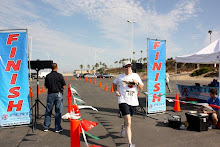From the Navy:
The Decommissioning Ceremony of the USS Los Angeles (SSN 688) submarine occurred on Janury 23, 2010 at the Port of Los Angeles, San Pedro, California.
The USS Los Angeles was the fourth naval ship to be named after the City of Los Angeles, and was the lead ship of her class. She was launched on April 6, 1974 at Newport News Shipbuilding and Drydock company in Newport News, Virginia.
On May 27, 1977, she hosted President Jimmy Carter and Admiral Hyman Rickover for an at-sea demonstration of the capabilities of the nation's newest fast attack submarine.
The USS Los Angeles commenced the first Engineered Refueling Overhaul of a Los Angeles class fast attack submarine in the early 1990s. During this overhaul, she was outfitted with the latest state-of-the-art sonar and fire control systems, as well as the Navy's newest reactor controls equipment. These extensive upgrades made her one of the most advanced submarines in the world at the time.
Her many capabilities include wartime functions of undersea warfare, surface warfare, strike warfare, mining operations, special forces delivery, reconnaissance, carrier battle group support and escort and intelligence collection.
Excerpts from the Daily Breeze newspaper article (1/23/10):
The USS Los Angeles was commissioned in 1976 to spy on enemy Soviet ships during the Cold War, spawning 44 similar models that will eventually be replaced over the next several years by the larger, more technologically advanced Virginia class of submarines.
"The Los Angeles-class subs were designed for a 30-year lifespan and so, unfortunately, it's time to start taking them apart," said Lt. Cmdr. David Benham, a Navy spokesman.
Commander Steven M. Harrison was the last Commanding Officer of the USS Los Angeles (SSN 688).
**San Pedro played an early role in the development of the Navy's submarine force. For part of this history, please see this prior post:




